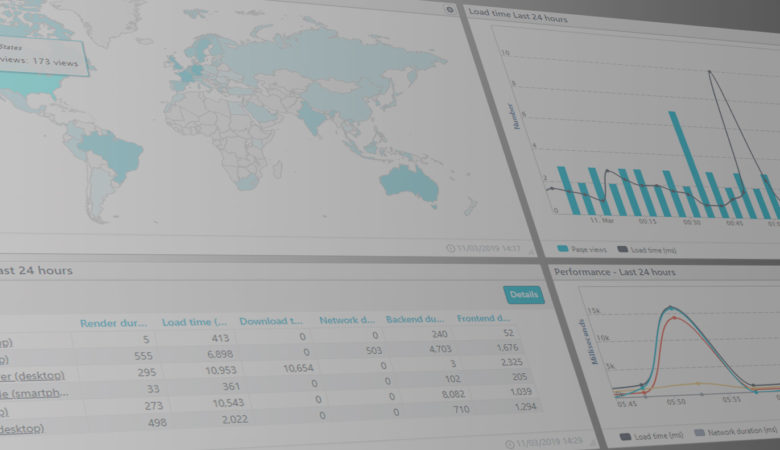There’s an old saying that “knowledge is power” and no matter how you choose to interpret its meaning, nothing could hold true more when it comes to the quality and quantity of information derived from your website monitoring service.
When data fails to meet expectations for quality, validity, and consistency, it can have wide-spread negative effects on company operations and key strategies. It comes down to keeping a finger on the pulse of how certain metrics can improve things like customer retention, bolster revenue projections, and support brand reputation.
The level of data accuracy you receive from your web monitoring service, combined with the global reach of its checkpoint coverage, offers a much more granular view of key metrics and likely returns more value for your investment in the service. Here’s why.
Data accuracy is vital for enterprise strategic success
Now more than ever, data analytics are taking a lead role in driving better customer relations, reaching key performance indicators (KPIs), and plugging gaps leading to damaging revenue shortfalls. Poor data quality costs organizations upwards of $12.9 million every year.
During 2022, it’s estimated that 70% of organizations will track data quality levels via metrics with the plan to improve it by 60% to reduce operational risks and costs, according to a Gartner report.
Uptrends website monitoring solutions contribute to data accuracy by offering a checkpoint network that is set up to ensure there are no false positives by double-checking errors for accuracy. Checkpoints are independent of each other and individually hosted in their own data centers, further guaranteeing that alerts or errors are even more likely to be highly accurate.
Checkpoint size matters
Uptrends maintains a global checkpoint network of over 230 physical servers. By default, users can select a minimum of three individual checkpoints but having a high number of physical checkpoint locations lends itself to more consistency, which in turn, equals accurate, more stable data to run analytics on.
A large checkpoint network is not only more stable but reduces the chance of reporting false positives. It also helps with better monitoring of content delivery networks (CDN), which are used extensively by third-party applications and services, such as Facebook, Google Analytics and others.
If you have a CDN located in Europe, you want to make sure that your users there are accessing that specific CDN and not, say, one located in the United States. Uptrends checks your CDN responses from multiple locations, measuring response times, connection details, headers, response size, and more.
This enables your team to shed light on areas of concern, compare results across checkpoint locations for your CDN’s performance and helps answer questions of whether your CDN helping or hurting.
Latency is a metric related to page load time in browsers. It’s also a metric that can greatly affect online sales. Uptrends’ large network of checkpoints empowers you to find out where in the world your website’s latency is the highest, allowing you to take action in areas where it’s most necessary.
Location, location, location
Some monitoring companies, such as Dynatrace and Catchpoint, spread out their cloud-based checkpoints in different parts of the world but not necessarily where your customers are located.
Uptrends’ 231 checkpoint servers are physically located in key commercial centers in specific cities, not somewhere nearby and are backed up by multiple servers for service continuity during disruptions and better data accuracy.
If you whitelist your IP addresses, using a cloud checkpoint might make scaling is easier, but you don’t always get one single IP. Sometimes they are scattered, and you may lose some of the security benefits from having a static IP address.
It’s more cost-effective
In a wobbly global economy, you want to ensure that your monitoring budget is well spent.
Uptrends global checkpoint network gives companies the monitoring edge they need whether they operate internationally, nationally, or somewhere in between. Almost all our competitors have very limited checkpoint coverage, and they charge extra for adding regional checkpoints to your monitoring, thereby increasing your cost and making it more difficult to manage your monitoring spend.
Reliability and coverage in key locations make Uptrends a very economically attractive monitoring solution as all these checkpoints are included in each of our monitoring solutions. Even as our checkpoint network grows, you can rest assured that your monitoring budget won’t follow.
Network stability reduces the chance of false positives
With several hundred servers comprising Uptrends’ total checkpoint network, we can ensure with a high degree of confidence that there are no false positives.
Each checkpoint server is individually hosted. They are independent of each other and physically located in their own data centers. A checkpoint network of machines spread out geographically ensures greater data accuracy because it would take an improbable cascade of events for all the machines in the network to go down at once.
The takeaway
Checkpoint density and a quality monitoring network are essential must-haves if you’re looking to up your data accuracy game — also two of Uptrends greatest strengths. The more checkpoints you have access to, the more stability you will have, and the more accurate data points you’ll have to run analytics from.
Websites perform differently depending on their geographic locations. For Business and Enterprise account holders, the option to choose checkpoints by monitor or monitor groups, and by geographic location, paves the way for you to be able to get the monitoring metrics and functionality that you really need — not just for more accurate data but also for compliance SLA reporting, downtime reporting, reaching KPIs, and more in a cost-effective solution. Find out for yourself about Uptrends’ unparalleled ability to harness the power of data. Start a free trial now.




